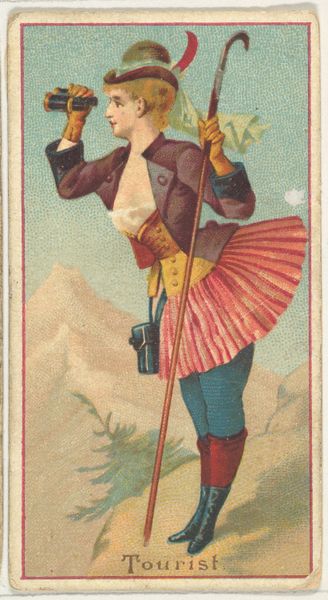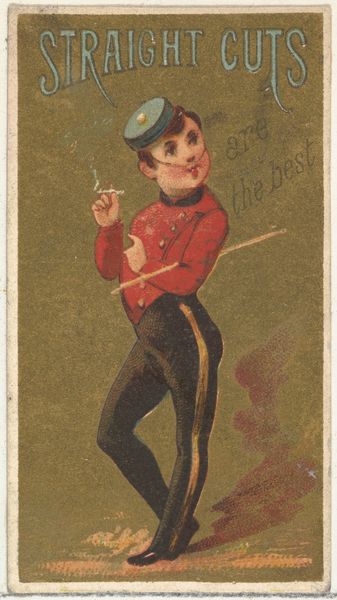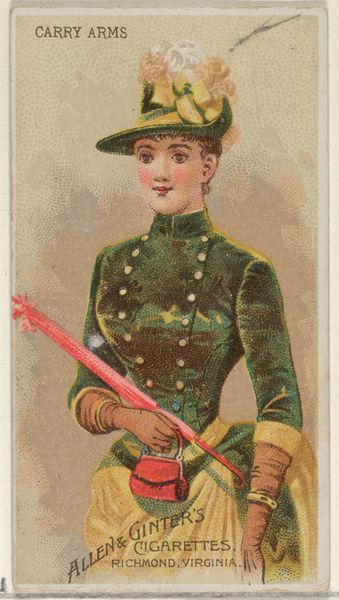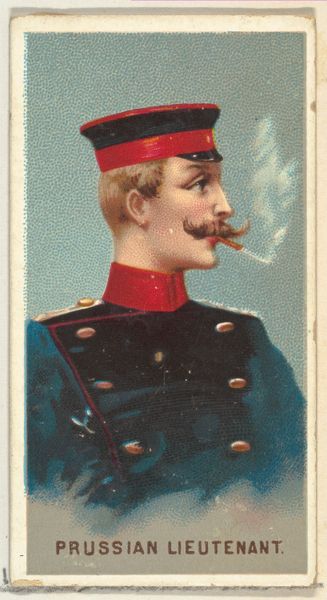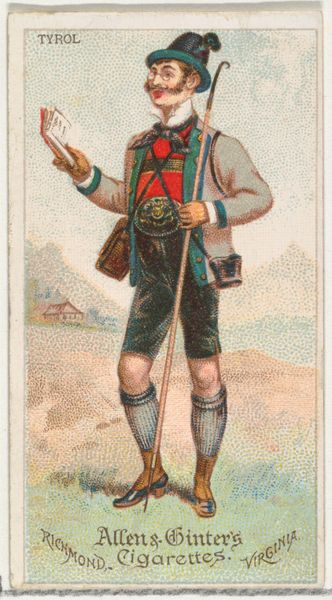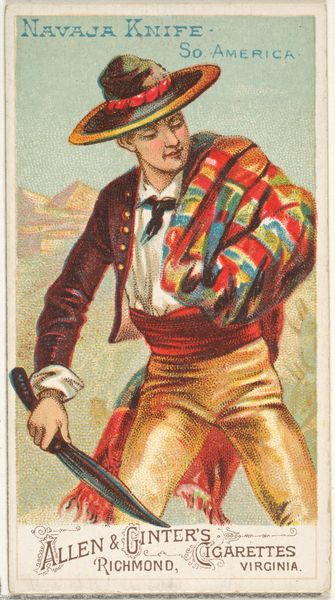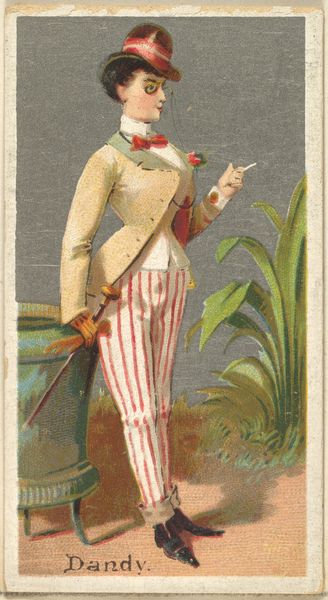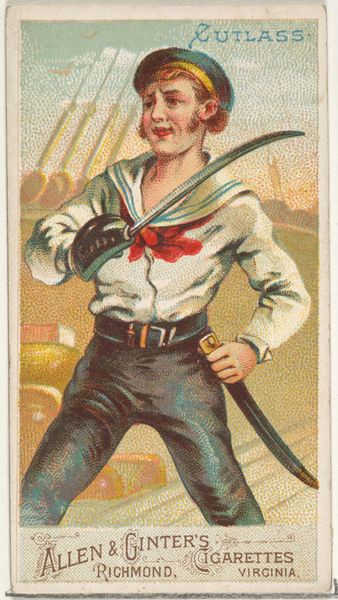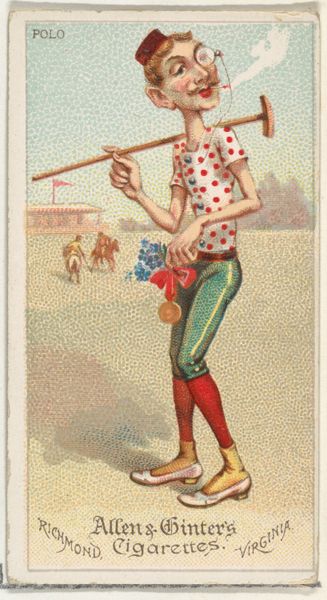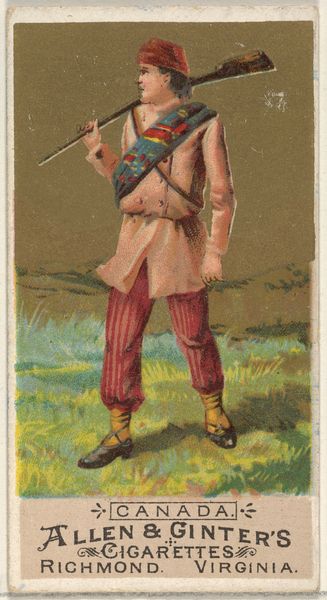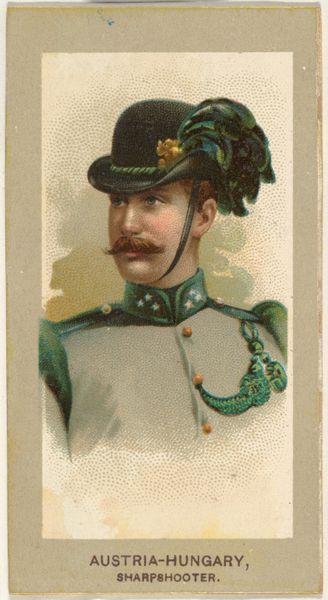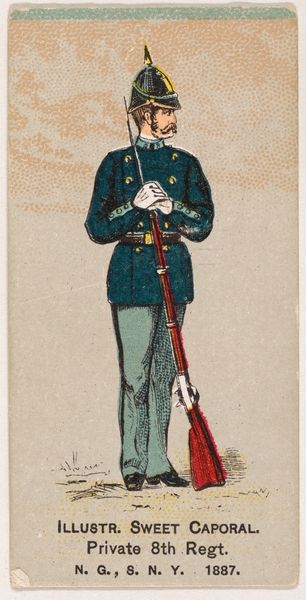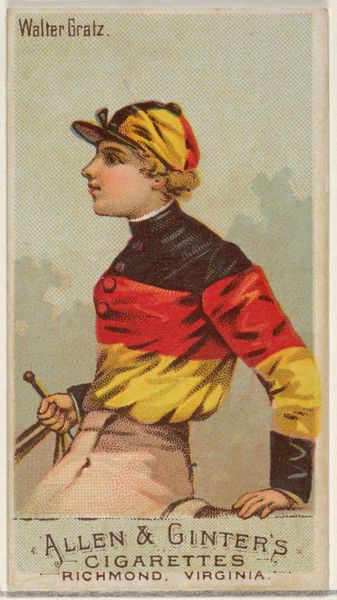
Coaching, from World's Dudes series (N31) for Allen & Ginter Cigarettes 1888
0:00
0:00
#
portrait
# print
#
coloured pencil
#
watercolor
Dimensions: Sheet: 2 3/4 x 1 1/2 in. (7 x 3.8 cm)
Copyright: Public Domain
Editor: Here we have "Coaching" from the World's Dudes series (N31), an 1888 watercolor and print by Allen & Ginter Cigarettes, a truly unique collectible at The Met. Initially, I’m struck by the detailed lines and the flat perspective, creating a sense of both precision and artificiality. What compositional elements stand out to you? Curator: Note the work's construction, a structured series of shapes composed into the human form and setting. The artist’s emphasis on contour gives primacy to the outline; we see a gentleman meticulously defined by his form. Notice, also, the restricted palette, reinforcing the two-dimensional quality of the object and giving the impression of graphic design. Consider, too, the integration of text into the overall design. How does the lettering itself contribute to the composition? Editor: The font feels period-specific, adding another layer of context, like it's part of the visual texture. Do you think the flatness emphasizes the commercial intent? Curator: Precisely. The absence of depth enhances the image’s accessibility and reproducibility, critical for its original function as a cigarette card. Furthermore, the careful balance between text and image demonstrates a keen awareness of visual hierarchy and effective marketing. Are there elements within the drawing itself that reinforce this sense of balance and order? Editor: I see that the composition symmetrically uses diagonal lines made by the carriage shaft to lead the viewer's eye, anchoring the seated man. Curator: And consider how the color reinforces these sight lines and orientation to direct visual flow around the work's parts, a very considered approach to arranging form within space. Editor: So, through line, color and form, this cigarette card uses artifice and clever design to transcend its commercial purpose. Curator: Indeed, and in doing so, provides us with insight into the visual strategies employed in late 19th-century commercial art.
Comments
No comments
Be the first to comment and join the conversation on the ultimate creative platform.
